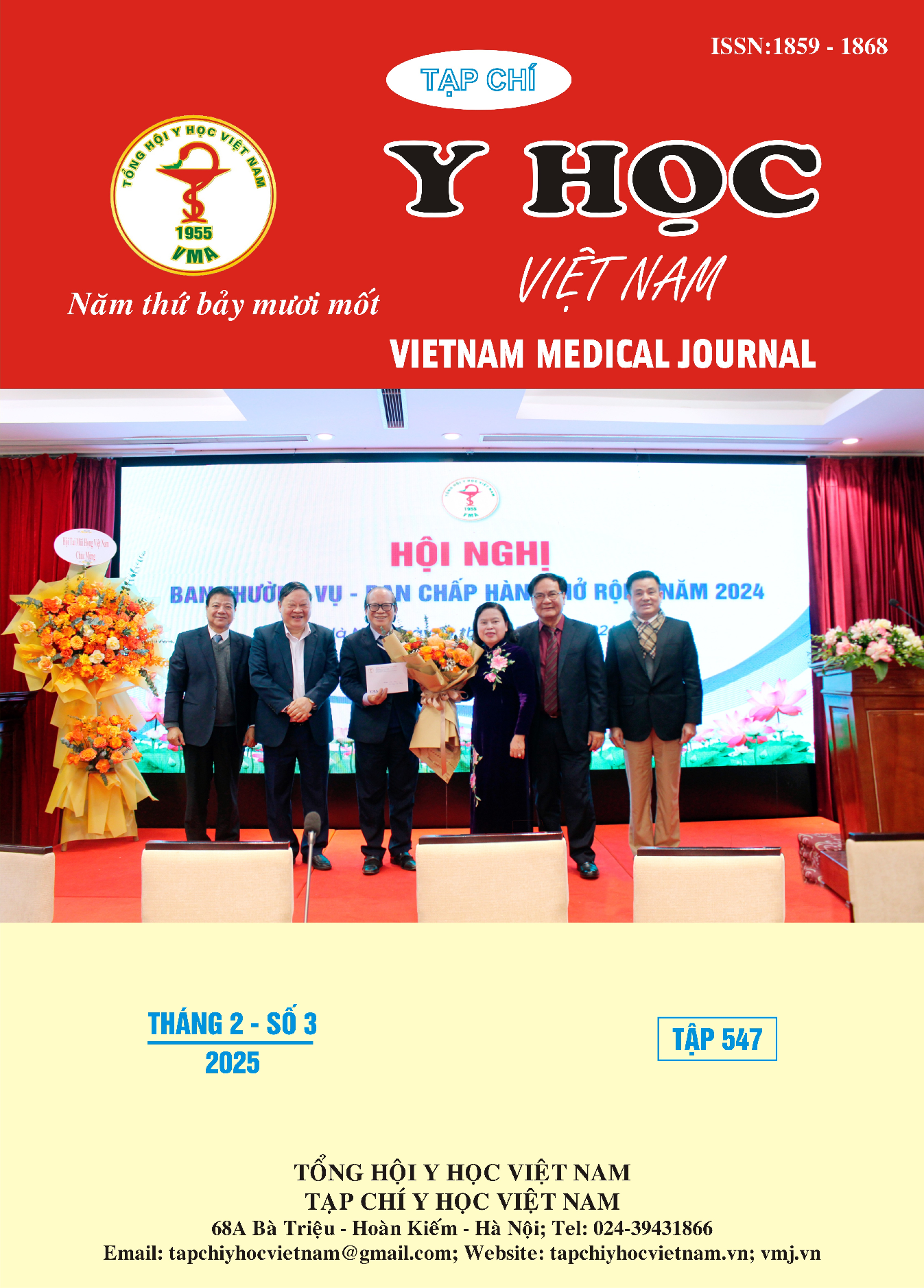KIẾN THỨC THỜI KỲ HẬU SẢN CỦA CÁC SẢN PHỤ SAU ĐẺ TẠI BỆNH VIỆN SẢN NHI QUẢNG NINH NĂM 2024
Nội dung chính của bài viết
Tóm tắt
Mục tiêu: Đánh giá kiến thức về thời kỳ hậu sản của các sản phụ sau đẻ tại Bệnh viện Sản Nhi Quảng Ninh năm 2024. Đối tượng và phương pháp nghiên cứu: Nghiên cứu trên 252 bà mẹ sau đẻ tại Bệnh viện Sản Nhi Quảng Ninh từ tháng 12/2023 đến tháng 3/2024. Với phương pháp nghiên cứu mô tả cắt ngang có phân tích, cỡ mẫu được tính theo phương pháp tính cỡ mẫu cho ước lượng 1 tỷ lệ. Kết quả sẽ được tổng hợp và phân tích bằng phần mềm thống kê SPSS 20. Kết quả: Kết quả phỏng vấn 252 bà mẹ cho thấy độ tuổi 20-35 chiếm tỷ lệ cao nhất 68,2%, nghề nghiệp chính chủ yếu là nghề tự do, trình độ học vấn 59,9% là từ THPT trở lên. Kiến thức của các bà mẹ về thời kỳ hậu sản không đồng đều ở các nội dung. Về chăm sóc hậu sản, các vấn đề liên quan đến việc vệ sinh vú trước và sau khi cho trẻ bú chỉ đạt 63,1%; 57,1%. Bà mẹ có kiến thức đúng về sử dụng áo ngực khá cao chiếm 88,5% và 96,8%. Có 96,4% bà mẹ trả lời đúng sau khi trẻ bú no thì phải hút hết sữa dư thừa ra để tránh gây tắc tia sữa. Hầu hết các bà mẹ đều biết giữ tinh thần lạc quan, vui vẻ, tránh stress; uống đủ nước; tập thể dục với tỷ lệ lần lượt là 94,4%; 95,6% và 94%. Kiến thức chung của bà mẹ về các nội dung chăm sóc hậu sản ở mức độ đạt chiếm 73%. Kết luận: Bà mẹ có kiến thức chung về chăm sóc hậu sản ở mức đạt chỉ chiếm 73%; số bà mẹ có kiến thức chưa đạt chiếm 27%.
Chi tiết bài viết
Từ khóa
chăm sóc hậu sản, tắc tia sữa, bà mẹ sau sinh
Tài liệu tham khảo
2. Bộ Y tế (2016), Hướng dẫn quốc gia về các dịch vụ Chăm sóc sức khỏe sinh sản Trẻ em Vụ Sức khỏe Bà mẹ, chủ biên, Hà Nội, tr. 221-222.
3. Đỗ Hương (2020), Tắc tia sữa và những điều nên biết, Sở Y tế Hà Nội, truy cập ngày 10/5/2022, tại trang web https://soyte.hanoi. gov.vn/kham-chua-benh-pho-bien-kien-thuc-y-hoc/-/asset_publisher/4IVkx5Jltnbg/content/tac-tia-sua-va-nhung-ieu-nen-biet#:.
4. Ngô Thị Vân Huyền, Hoàng Thị Mai Nga và Trần Thị Hường (2018), "Thực trạng kiến thức về tắc tia sữa của bà mẹ sau sinh tại khoa sản Bệnh viện Trung Ương Thái Nguyên", Tạp chí khoa học và công nghệ đại học Thái Nguyên. 177(01), tr. 177-182.
5. Lê Thanh Tùng và Vũ Thị Lệ Hiền (2019), "Chăm sóc sản phụ có bất thường về vú và tiết sữa", trong Đào Thị Hồng Nhung và Cao Vân Anh, chủ biên, Chăm sóc bà mẹ sau đẻ, Nhà xuất bản Giáo dục Việt Nam, Trường Đại học Điều dưỡng Nam Định.
6. Sulistyowati, Agus (2018), "Effectiveness of breast care on the smooth delivery of breast milk", J Nurse Health: Jurnal Keperawatan. 7(2), pp. 121-123.
7. Vieira, Ana Paula Rodrigues, et al. (2013), "Motherhood in adolescent and family support: implications in breast care and self-care in postpartum", J Ciênc Cuid Saúde. 12(4), pp. 679-87.


